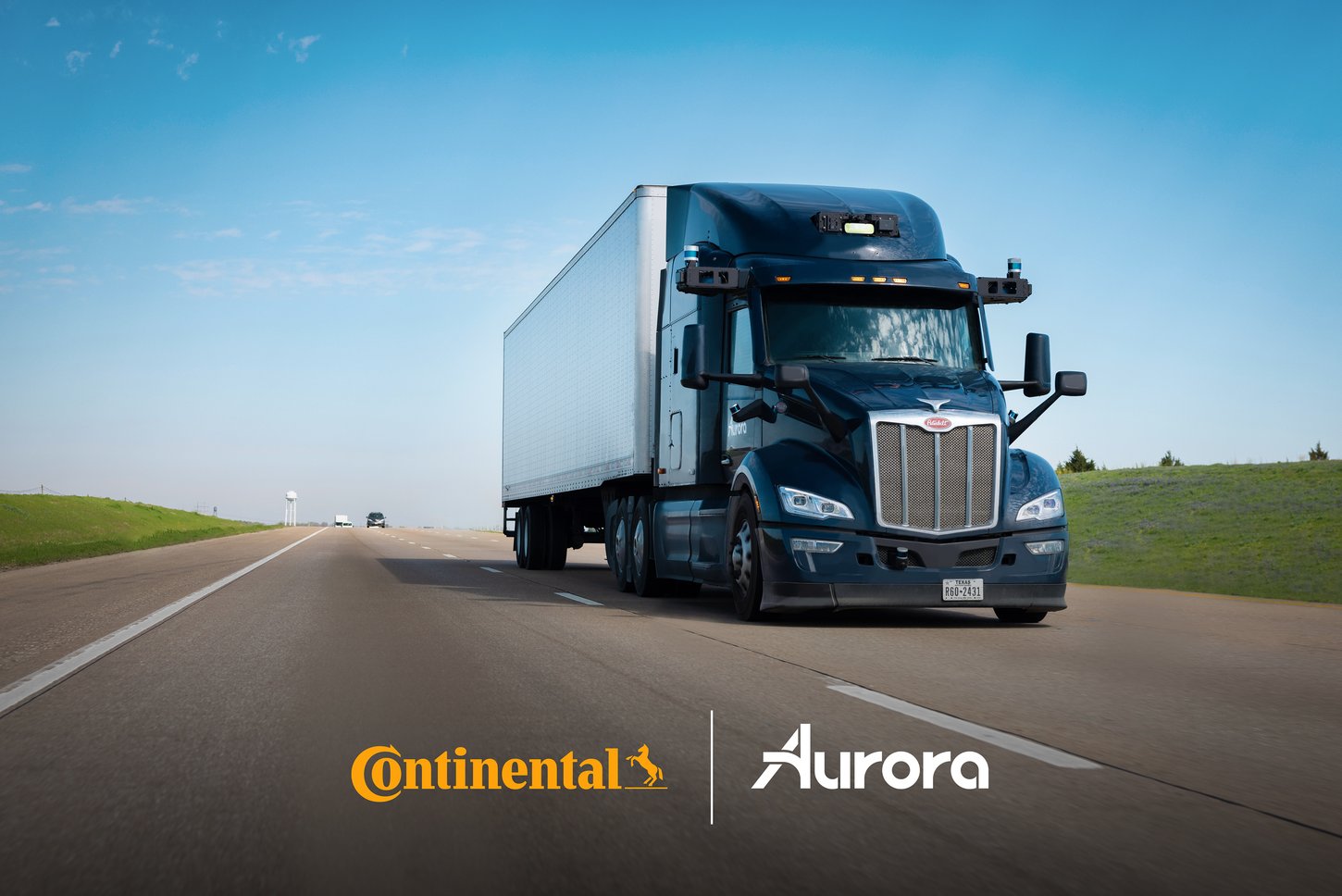When it comes to trucks, autonomous driving is making rapid progress. Suppliers are now cooperating with startups in the autonomous vehicle industry.
The development autonomous trucks promises more sales and commercial use better sales. Where there is a shortage of workers and delivery traffic increases, the robot has to get to work. works like that Bosch with the startup Plus together where Continental with the company aurora cooperates.

Continental and Aurora have signed an exclusive partnership to implement autonomous truck systems. Source: Continental
Bosch & Plus
Bosch works with the startup Plus to develop and deploy advanced driver assistance functions. The companies announced this on Monday at the Advanced Clean Transportation Expo. The new system combines the predictive power of Plus’ 360-degree sensors and assistants such as lane change with Bosch hardware and steering system. Plus wants to gradually switch to autonomous driving. Plus delivered its first trucks equipped with these systems in 2021. A demonstration of the arts is to be held in China later this year.
Continental & Aurora
This is the second formal collaboration between an automated technology provider and a major global supplier in just a few weeks. Continental and Aurora recently formed a new collaboration that will affect Aurora’s autonomous driving. The goal is to realize the first commercially scalable generation of Aurora’s hardware and software system, the Aurora Driver, in the USA.
This scalable autonomous system is provided for the commercial vehicle industry and maintained by Continental to reduce costs and enable large-scale deployment. Continental is contributing its decades of experience in system development for safe and reliable vehicle solutions, including a backup system in the unlikely event of a failure of the primary autonomous system.
Joint production is expected in 2027, following the planned launch of Aurora Horizons: the subscription transportation service consisting of the Aurora Driver and complementary services. Autonomous truck systems have the potential to meet a growing demand for freight transport, reducing fuel consumption by around ten percent and reducing delivery times by up to three times compared to human drivers.